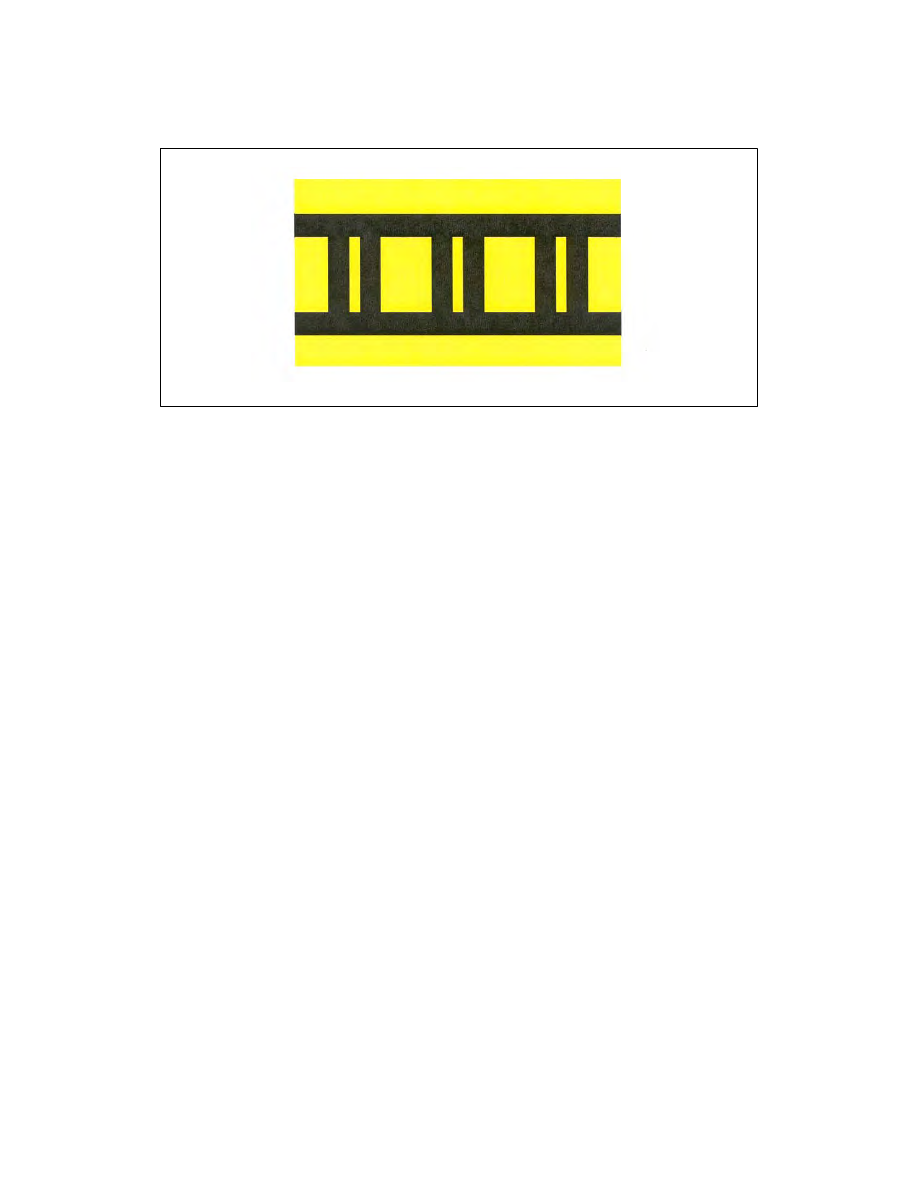
AIM
4/3/14
2−3−25
Airport Marking Aids and Signs
FIG 2
−3−34
ILS Critical Area Boundary Sign
4. ILS Critical Area Boundary Sign.
This
sign has a yellow background with a black inscription
with a graphic depicting the ILS pavement holding
position marking as shown in FIG 2−3−34. This sign
is located adjacent to the ILS holding position
marking on the pavement and can be seen by pilots
leaving the critical area. The sign is intended to
provide pilots with another visual cue which they can
use as a guide in deciding when they are “clear of the
ILS critical area.”
2
−
3
−
10. Direction Signs
a.
Direction signs have a yellow background with
a black inscription. The inscription identifies the
designation(s) of the intersecting taxiway(s) leading
out of the intersection that a pilot would normally be
expected to turn onto or hold short of. Each
designation is accompanied by an arrow indicating
the direction of the turn.
b.
Except as noted in subparagraph e, each
taxiway designation shown on the sign is accompa-
nied by only one arrow. When more than one taxiway
designation is shown on the sign each designation and
its associated arrow is separated from the other
taxiway designations by either a vertical message
divider or a taxiway location sign as shown in
c.
Direction signs are normally located on the left
prior to the intersection. When used on a runway to
indicate an exit, the sign is located on the same side
of the runway as the exit. FIG 2−3−36 shows a
direction sign used to indicate a runway exit.
d.
The taxiway designations and their associated
arrows on the sign are arranged clockwise starting
from the first taxiway on the pilot’s left.
(See FIG 2−3−35.)
e.
If a location sign is located with the direction
signs, it is placed so that the designations for all turns
to the left will be to the left of the location sign; the
designations for continuing straight ahead or for all
turns to the right would be located to the right of the
location sign. (See FIG 2−3−35.)
f.
When the intersection is comprised of only one
crossing taxiway, it is permissible to have two arrows
associated with the crossing taxiway as shown in
FIG 2−3−37. In this case, the location sign is located
to the left of the direction sign.